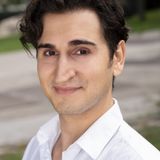Symptoms
The affected children slip into their world of thoughts and try to avoid contact with their fellow human beings, such as parents and siblings.
The autistic children often appear cold and emotionless. It seems as if it means nothing to them if their parents are angry, angry, or even happy and loving. Understandably, the parents also suffer because the offspring often do not even make eye contact with them. They are also less able to interpret facial expressions and have problems understanding feelings.
Impaired language development Early childhood autism is often accompanied by impaired language development. Typical for such children is a monotonous tone of voice. Supportive facial expressions and gestures are also weak and vocabulary is limited. Sometimes they use words incorrectly and interchange pronouns for example "I" instead of "you". Other characteristics of early childhood autism are repetitive actions. For example, they repeat phrases (echolalia) or repeat certain movements with their hands. Often these children manically collect random objects and then arrange them in order of size. Interruption of their actions can in turn lead to anxiety outbursts.
Decreased intelligence
Using age-appropriate intelligence tests, it has been found that 75% of those affected have diminished intelligence. In early childhood autism, specific giftedness, such as a photographic memory or special mathematical abilities, is very rare. Such things are more likely to be found in Asperger's syndrome.
Other symptoms that are not related to reduced intelligence are, for example: frequent sleeping and eating disorders, anxiety when the environment changes, laughing for no reason, incorrect assessment of dangerous situations or self-injurious actions.

